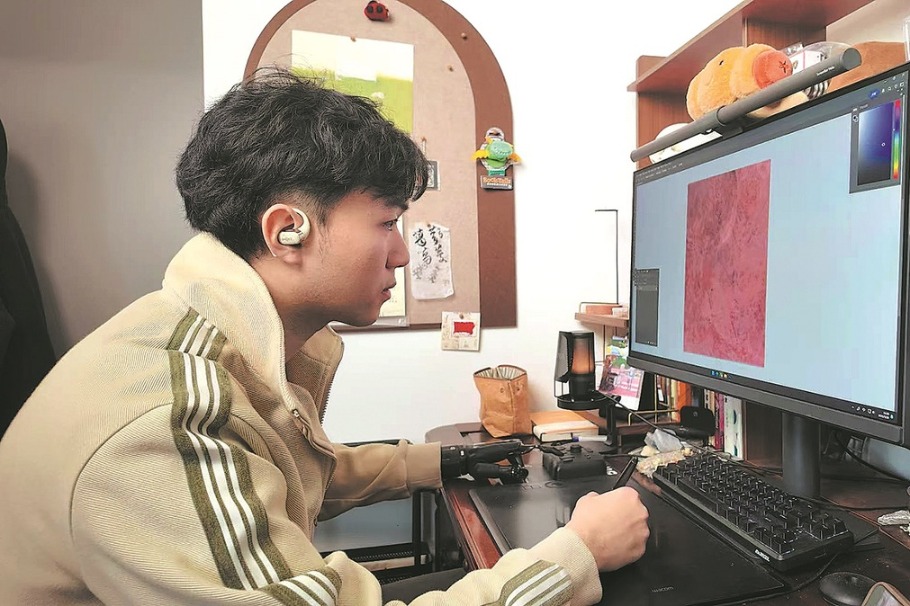Astrophysicist emphasizes gravity of his research

Like Sheldon's character in the sitcom The Big Bang Theory, Shao Lijing has a whiteboard in his office filled with abstruse physics formulas.
As someone who participated in gravitational wave detection and the capturing of the first ever image of a black hole, Shao sees the universe as a huge laboratory. He tests gravitational theory and explores as yet unknown cosmic laws by studying extreme physical phenomena, such as gravitational waves, black holes and pulsars.
The 35-year-old researcher from the Kavli Institute for Astronomy and Astrophysics at Peking University is considered to be one of the young leaders in gravitational wave research in China. A gravitational waveform template he developed in collaboration with his global counterparts has been used by international research teams in the search for binary black hole systems, leading to the discovery of dozens of new gravitational wave events.
Shao first read Stephen Hawking's A Brief History of Time in middle school and was immediately fascinated by the subject of black holes. "It's amazing that black holes exist not in fairy tales, but in the real world," he says.
His keen interest in the subject led him on a path to becoming an astrophysicist, and since 2011, he has focused his research on gravity. As a member of various international research teams, he has been involved in some major milestones in the field, including the merging of binary neutron stars in 2017, which was the first event of its kind detected by human beings, capturing the first published image of a black hole in 2019, and the first image of the black hole at the center of the Milky Way, which was released in May last year.
Though he had already deduced what a black hole would look like, Shao was still amazed when he saw the first image of one.
"The curved space-time theory may seem illusory, but it can actually predict very extreme phenomena in the real world," Shao says. "Confirming that prediction is a major breakthrough for humankind.
"Scientists plan to take better quality pictures of black holes in the future and even try and film them to see how their shadow changes over time," he adds.
Shao shared the 2020 Breakthrough Prize in Fundamental Physics as a member of the Event Horizon Telescope team, and was also included on a list of the world's top 2 percent of scientists in 2020 released by Stanford University.
"Gravity is one of the four fundamental interactions in nature, and the most important force in the evolution of stars and the universe. The research on the nature of gravity once greatly promoted the development of physics and has always been a hot subject in the fields of theoretical physics and astrophysics," Shao says.
"We need to study dark matter, dark energy and other issues that, so far, can't be easily explained by Einstein's theory of relativity. We hope to discover new physics through gravity research," says Shao, who is actively participating in scientific research projects related to pulsars, gravitational waves and black holes.
Shao is conducting pulsar-related theoretical pre-research and training young scientists for the Square Kilometre Array, the world's largest astronomical device currently under construction, of which China is one of the sponsors and a prominent member.
He also demonstrated the scientific objectives for China's Taiji and Tianqin space gravitational wave detection projects, and studied the possibility of using space gravitational wave detection to search for exoplanets, among other things.
He designed a brand-new astrophysical experiment, together with his collaborators, to study the properties of dark matter through pulsar orbit changes.
Shao hopes that more people will be able to understand and appreciate astrophysics, which he believes can add a new dimension to a person's life and make them more open-minded.
"Studying astrophysics taught me that human beings are so tiny in the universe," Shao says. "But such a tiny creature can understand the vastness and depth of the universe, and in this sense, human beings are great."
Xinhua































